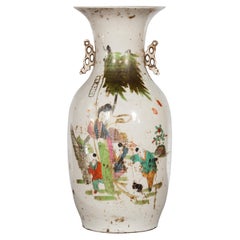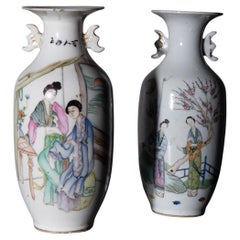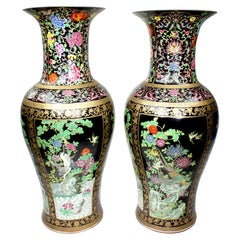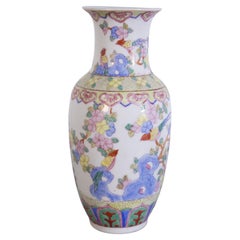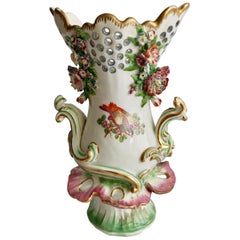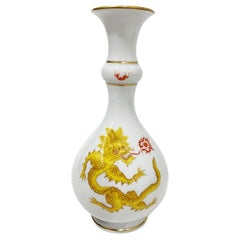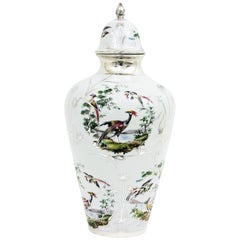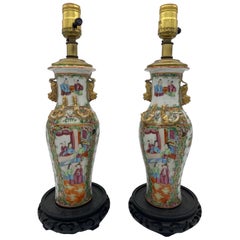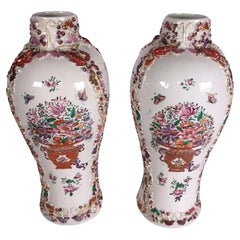A Chinese Porcelain Vase With
Early 20th Century Chinese Vases
Porcelain
Antique Early 1900s Chinese Chinese Chippendale Porcelain
Porcelain
Late 20th Century Chinese Chinese Export Porcelain
Porcelain
20th Century Chinese Chinese Export Porcelain
Porcelain
Antique 1760s English Rococo Porcelain
Porcelain
Mid-20th Century German Porcelain
Porcelain
Mid-20th Century Chinese Mid-Century Modern Porcelain
Silver
Antique 19th Century Chinese Qing Porcelain
Porcelain
Antique 1780s Chinese Vases
Porcelain
Late 20th Century Chinese Chinese Export Vases
Porcelain
Early 20th Century Chinese Porcelain
Porcelain, Lacquer
Early 20th Century Chinese Qing Porcelain
Porcelain
Antique 19th Century Chinese Chinese Export Porcelain
Porcelain
Mid-20th Century Chinese Vases
Porcelain
Antique 19th Century Chinese Porcelain
Enamel
Early 20th Century Chinese Chinese Export Vases
Porcelain
Antique 19th Century German Rococo Porcelain
Porcelain
Early 20th Century Chinese Qing Porcelain
Porcelain
20th Century Chinese Chinese Export Porcelain
Porcelain
20th Century Hungarian Porcelain
Porcelain
Antique 1770s German Neoclassical Porcelain
Porcelain
Vintage 1970s French Mid-Century Modern Porcelain
Silver Plate
20th Century Chinese Chinese Export Vases
Porcelain
Antique 19th Century Chinese Chinese Export Porcelain
Porcelain
20th Century Chinese Chinese Export Vases
Porcelain
20th Century Hungarian Porcelain
Porcelain
Antique 19th Century Chinese Vases
Porcelain
Antique Mid-19th Century Chinese Baroque Porcelain
Porcelain
Antique Mid-19th Century Chinese Baroque Porcelain
Porcelain
Antique 19th Century Chinese Export Vases
Porcelain
Early 20th Century Chinese Vases
Porcelain
Antique 19th Century French Vases
Bronze
20th Century Chinese Vases
Porcelain
Early 20th Century Chinese Vases
Porcelain
20th Century French Belle Époque Vases
Celadon
Antique Mid-19th Century Chinese Baroque Porcelain
Porcelain
Antique Late 19th Century Chinese Chinese Export Vases
Porcelain
20th Century Chinese Chinese Export Vases
Porcelain
Antique 19th Century Chinese Chinese Export Vases
Porcelain
20th Century Chinese Chinese Export Vases
Porcelain
Antique 18th Century Chinese Chinese Export Vases
Porcelain
Antique 19th Century Chinese Chinese Export Vases
Porcelain
20th Century Chinese Vases
Porcelain
Antique Mid-19th Century Chinese Vases
Ormolu
Antique 19th Century Chinese Vases
Porcelain
Mid-20th Century Chinese Vases
Porcelain
Mid-20th Century Chinese Vases
Porcelain
Mid-20th Century Chinese Vases
Porcelain
Mid-20th Century Asian Mid-Century Modern Vases
Porcelain
Early 20th Century Chinese Vases
Porcelain, Wood, Paint
Early 20th Century Chinese Baroque Porcelain
Porcelain
Antique Mid-18th Century English Chinoiserie Porcelain
Porcelain
Vintage 1970s Chinese Chinese Export Vases
Porcelain
20th Century Chinese Vases
Porcelain
20th Century Chinese Vases
Porcelain
Antique Mid-19th Century Chinese Chinese Export Vases
Porcelain
20th Century Chinese Chinese Export Vases
Porcelain
20th Century Chinese Vases
Porcelain
20th Century Chinese Chinese Export Vases
Porcelain
Antique 19th Century Chinese Chinese Export Vases
Porcelain
- 1
- ...
A Chinese Porcelain Vase With For Sale on 1stDibs
How Much is an A Chinese Porcelain Vase With?
- What is a porcelain vase?1 Answer1stDibs ExpertMarch 22, 2022A porcelain vase is a vessel made out of vitrified pottery. Porcelain is a semi-translucent white color and has a smooth, sleek texture. Traditionally, people use porcelain vases to hold fresh, dried and silk flower arrangements, but you can also display them empty as decorative accents. Find a range of antique and vintage porcelain vases on 1stDibs.
 Lotus GallerySeptember 15, 2020
Lotus GallerySeptember 15, 2020Chinese porcelain can usually be dated by form and decoration. However, copies and forgeries abound, so you should have an expert such as an appraiser, reputable dealer or auction house, or museum examine your porcelain to accurately date it.
- 1stDibs ExpertApril 5, 2022A Chinese porcelain pillow is a type of ceramic object produced by Chinese artisans. They normally have highly decorative rectangular designs and feature curved tops. Historically, they functioned as headrests, but today they normally serve purely as decorations. On 1stDibs, shop a wide variety of Chinese porcelain ware.
- What is Chinese porcelain called?2 Answers
 PAGODA REDOctober 7, 2020
PAGODA REDOctober 7, 2020True porcelain ware was developed in the 11th century at the imperial kilns of Jingdezhen, Jiangxi province, China. These early porcelains of the Song and Yuan dynasties are known as Qingbai or Yingqing ware, defined by a light blue-grey glaze. Later forms of Chinese porcelain include blue and white underglaze ware, Celadon ware, Jun ware, Famille Verte ware, Wucai (Five Color) ware, and Dehua ware, also known as Blanc de Chine.
 Lotus GalleryMarch 17, 2021In China, porcelain is referred to a "cíqì" 瓷器.
Lotus GalleryMarch 17, 2021In China, porcelain is referred to a "cíqì" 瓷器. - 1stDibs ExpertApril 5, 2022Chinese Canton porcelain is a type of decorative hand-painted ceramic ware produced during the 18th, 19th and 20th centuries in China. Its name comes from the region where it originated. You will sometimes see it referred to as Cantonese porcelain. On 1stDibs, find a selection of Chinese Canton porcelain.
 Lotus GallerySeptember 23, 2020
Lotus GallerySeptember 23, 2020The best way to know is to take it to an expert, such as an appraiser, reputable dealer or auction house, or museum
- 1stDibs ExpertAugust 20, 2024To identify Chinese porcelain marks, consult trusted online resources. Most markings on Chinese porcelain consist of four to six characters, and the last two often represent when a piece was produced. Since there is a lot of variation in the markings, looking at images shared on trustworthy websites is the best way to make an identification. Alternatively, you can use the services of a certified appraiser or knowledgeable antique dealer. On 1stDibs, explore a wide range of Chinese porcelain.
- 1stDibs ExpertApril 5, 2022To identify Chinese export porcelain, first look for a mark. Most pieces made after 1891 feature a maker's mark that you can research using authoritative online resources. Identifying older porcelain ware is more difficult. A licensed appraiser can provide assistance. You'll find a range of expertly vetted Chinese export porcelain on 1stDibs.
- 1stDibs ExpertApril 5, 2022You can sell old Chinese porcelain in a few ways. You can advertise the piece locally or work with an antique shop or auction house. There are also reputable online platforms available for selling online. Shop a collection of Chinese porcelain on 1stDibs.
- 1stDibs ExpertApril 5, 2022Chinese Kangxi porcelain was popular because of its particular blue colorings. The blue was made using cobalt ore which was imported from Persia. As cobalt ore was a scarce ingredient, the rarity made the porcelain items highly sought after. Shop a collection of Chinese Kangxi porcelain from some of the world’s top sellers on 1stDibs.
- 1stDibs ExpertApril 5, 2022Chinese blue and white porcelain is the most common type of decorated porcelain. Its name in Chinese is qinghua. On 1stDibs, you’ll find a collection of antique and modern Chinese blue and white porcelain from some of the world’s top sellers.
 PAGODA REDOctober 21, 2020
PAGODA REDOctober 21, 2020For thousands of years, China’s court-sponsored porcelain industry has been at the forefront of technical innovation and aesthetic refinement. Exquisite finishes and precision of form gave China an international reputation for fine ceramic wares. Age, shape, glaze, motif, and reign mark are all factors contributing to the value of a ceramic piece, indicative of the maker and the dynastic reign under which the object was created.
- 1stDibs ExpertApril 5, 2022The best way to identify an antique porcelain vase is to check for a maker’s mark. Gently flip the vase over and look for a signature or logo on the bottom. You may also find the name of the artist or designer. Old vases were also made in wood-based kilns, so an antique vase will likely have small imperfections such as coarseness, crackling or asymmetry. When in doubt, work with a certified appraiser to determine the authenticity of your vase. On 1stDibs, you’ll find a variety of expertly vetted antique porcelain vases.
- 1stDibs ExpertApril 5, 2022There are a few ways to tell the approximate age of a porcelain vase, including identifying the maker's mark. These are usually located on the bottom of the vase. The maker's mark can help you find the era of manufacture once you know the company or studio that produced the piece. Look for imperfections, which were inevitable with wood-fuelled kilns of the past but uncommon with modern gas-fuelled kilns. On 1stDibs, shop a collection of antique porcelain from some of the world's top sellers.
- 1stDibs ExpertOctober 7, 2024The difference between porcelain and ceramic vases is that the former is made of a specific type of material, while the latter is a broader category. Ceramic vases are vessels made of clay that have been hardened by heat. Porcelain is one type of ceramic. Fashioned out of kaolin clay that gets fired at high temperatures, porcelain is a durable material with a whitish, translucent appearance when unadorned. Find a large selection of porcelain vases and other ceramic vases on 1stDibs.
- 1stDibs ExpertApril 5, 2022A Chinese vase with a dragon typically means good fortune and prosperity. Throughout East Asia, the dragon is a symbol of luck. In China, the mythical beast is a common motif used in the designs of pottery, furniture and art. On 1stDibs, find a range of Chinese vases.
- 1stDibs ExpertMarch 22, 2022Chinese blue and white porcelain is called qinghua, pronounced “CHING-hwa.” Artisans first began producing the porcelain during the Tang and Song dynasties ranging from 609 to 1279. However, the techniques the pottery is most well known for weren't developed until the subsequent Ming era, which lasted until 1644. You'll find a collection of Chinese porcelain on 1stDibs.
